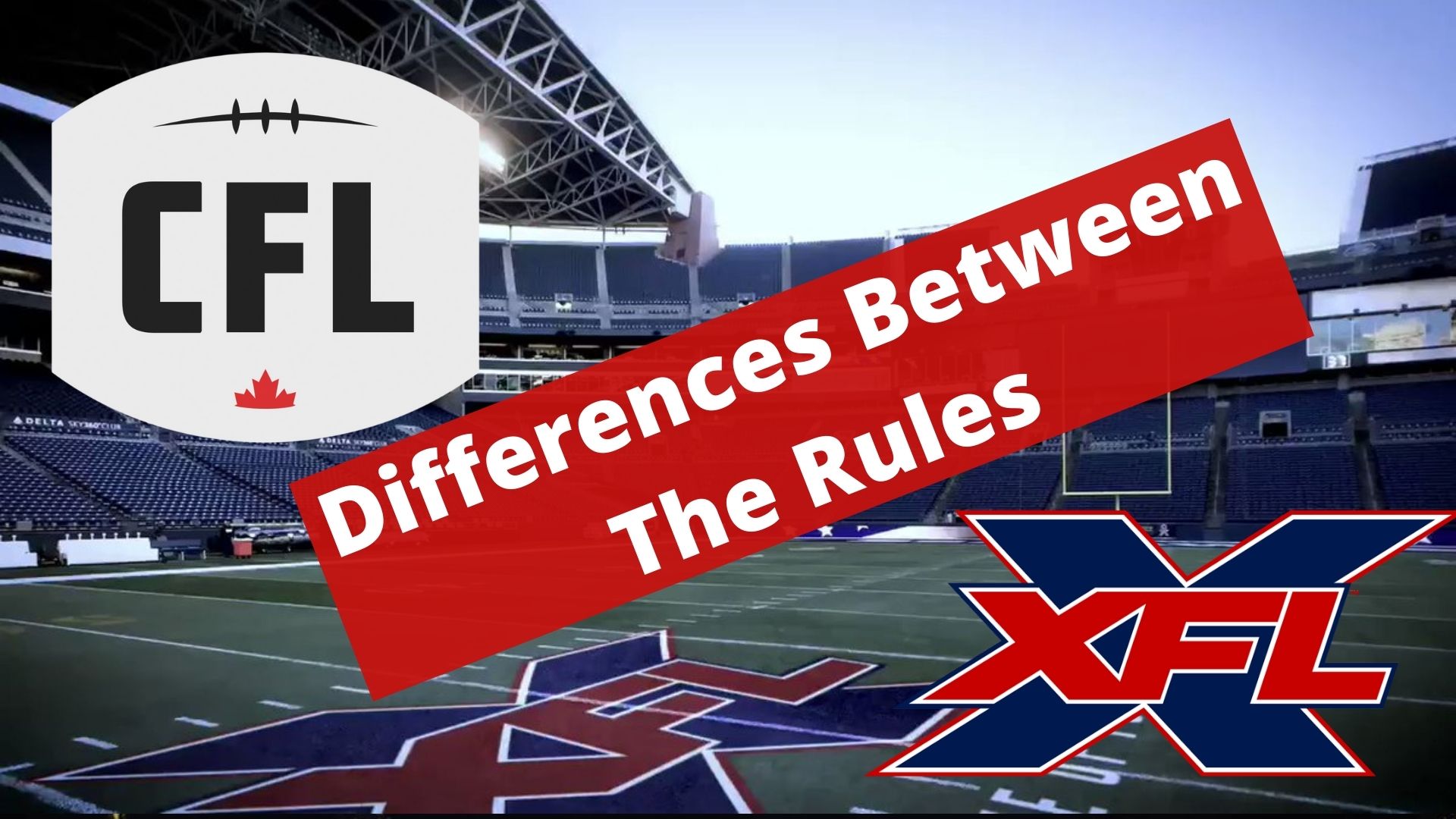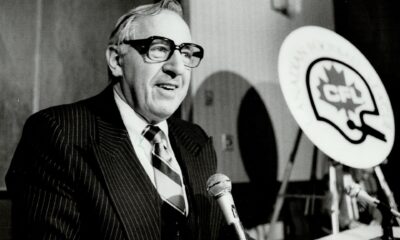
The XFL is looking to improve off of their 2020 season that was interrupted due to COVID. Here are the rules that the XFL will be implementing and how they compare to the CFL.
Play Clock
In the XFL, the play clock is a 25-second play clock. This is 15 seconds less than what the NFL play clock is. This rule was implemented in the XFL to try and speed up the pace of play, and get games done in under three hours.
In the CFL, the play clock is a 20-second play clock. This is 20 seconds less than the NFL, and five seconds less than the XFL. This makes the game more exciting for fans to watch as there is action every 20 seconds, but it forces the players to be in much better shape.
Game Clock
In the XFL, there is a running game clock. The game clock is always a running clock except in the last two minutes of each half. It is a bit of a loose running clock because after an out of bounds play, or an incomplete pass, the clock will stop until the ball is re-spotted.
In the CFL, the game clock operates similar to the NFL. After out of bounds plays the clock stops until the ball is re-spotted, and the clock is stopped until the next snap after an incomplete pass. Also, in the CFL there is a 3-minute warning instead of a 2-minute warning.
XFL Comeback Period
The XFL has implemented a comeback period, which has special rules for the clock due to the running clock the rest of the game. In the comeback period, the game clock will be stopped on plays that end in bounds until the ball is spotted and five seconds have been run off the game clock. On incomplete passes, or plays that end out of bounds, the clock is stopped until the next snap. This allows teams to make a comeback in this period, and make the game exciting at the end of each half. It also makes it hard for winning teams that possess the ball to run the clock out.
Overtime
In the XFL, teams are given five one-play possessions from the 5-yard line. Each successful attempt from the five yard line is two points. So, the teams will alternate attempts until one team is not able to come back given the amount of possessions left. Defense cannot score in overtime, so a turnover would result in the end of the possession. If both teams are tied after five possessions, then it turns into one possession back and forth until one team is stopped and the other scores.
In the CFL, teams are given one possession from the 35-yard line. From there they are given the opportunity to kick a field goal, or attempt to score a touchdown. Once the first team’s possession is over, the opposing team will be given the same chance to tie the game up or take the lead. If the opposing team takes the lead then they are the winners of the game. If there is no winner after each team has gotten three possessions then the game is deemed a tie, unless it is in the playoffs. If it is the playoffs then the same format proceeds until there is a winner.
CFL Rouge
The CFL rouge is when a returner on either a punt, or kickoff, is tackled inside their own end zone without leaving the end zone. When this occurs the kicking team is awarded a point. This rule is only used in the CFL. In the XFL if the player gains possession of the ball in the end zone on a kick or punt and never leaves the end zone before being tackled, then it is marked as a touchback and the receiving team starts their possession at the 25-yard line.
Scores After Touchdowns
In the XFL, there are no extra point kicks after touchdowns. Instead the scoring team has the option to go for it from the 2-yard line, 5-yard line or 10-yard line. A successful conversion from the 2-yard line is worth one point, from the 5-yard line is worth two points and from the 10-yard line is worth three points.
In the CFL, the scores after touchdowns are similar to the NFL. The scoring team has the option to kick a field goal that is worth one point, or they can decide to run another play near the goal line that is worth two points if successful.
Kickoffs
In the XFL, kickoffs are the same as the NFL, except the kicking team is not allow to pursue the ball until the returner has caught it. The kickoff still takes place from the 35-yard line, and the players must be on the 35-yard line with no running start. This is to promote returns in the XFL, and try to avoid injuries that could be caused on kickoffs.
In the CFL, kickoffs take place at the 35-yard line and each player must be 10 yards away from the ball prior to the play beginning. This allows for the players to get a running head start prior to the ball getting kicked.
Punt Returns
In the XFL, players on the punting team must wait until the ball is kicked to cross the line of scrimmage. The XFL wants to encourage returns, and this rule was implemented to do so.
In the CFL, players are allowed to pursue the ball before the ball is kicked. However, when they get to the returner they must give them a five-yard buffer zone to catch the ball and start a return.
Number of Players
In the XFL, the number of players on the field at one time is the same as the NFL. 11 players being on the field at one time is standard for both the XFL and NFL, but it is slightly different in the CFL.
In the CFL, there are 12 players allowed on the field for each team. This is mostly because of the field being bigger than football fields in America. The extra player is added to make up for the added length and width of Canadian football fields.
Field Size
In the XFL, the football field is a typical sized American football field. This means that the field is 120 yards long. The end zones are each 10 yards long, which leaves the neutral playing field to be 100 yards in length. The width of the field is slightly over 53 yards, to be exact it is 160 feet wide. This is the same size field that is used in the NFL.
In the CFL, the football field is larger than those that are played on in America. Instead of the field being 120 yards long, the field is 150 yards long. The end zones are each 20 yards long, which leaves 110 yards in length for the neutral part of the field. The width of the field is 65 yards wide, which is about 12 yards wider than an American football field.
Motion
In the XFL, motion rules are the same as they are in the NFL. One player is allowed to be in motion at one time, and that motion has to be backwards or parallel to the line of scrimmage.
In the CFL, the motion rules are quite different from the XFL and NFL. There is not a specific number of players that can be in motion at one time, any number of players are allowed to be in motion at one time as long as there are enough players on the line of scrimmage. The motion is also allowed to be forward unlike the XFL.
XFL and CFL Rules that are the Same
The rules that are shared between the two leagues are that a catch only requires one foot in bounds and that there are no fair catches. The one foot in bounds rule is similar to the college football rules that are used in America. The no fair catches is implemented to encourage returns and make the game more exciting for the fans.
XFL Rules to Speed Up the Game Compared to NFL Rules
The XFL is attempting to create a product that is similar to the NFL, but they would like to have a faster pace of play. This attempt to create a faster game has caused for there to be slight rule changes to the game. Each team will only be granted two timeouts per half instead of three, and the halftime will be two minutes shorter than the NFL. Also, coaches will not be able to challenge any rulings on the field.


1 Comment
Leave a Reply
Cancel reply
Leave a Reply
Big Announcement: CFL Unveils Free Live Streaming Platforms
Get Alerts & Stay Connected
CFL iPhone AppCFL Android App




















David Tress
May 28, 2021 at 11:42 am
The XFL is still much like the NFL in terms of rules. If they’d like something different they’d play CFL rules on a larger field.